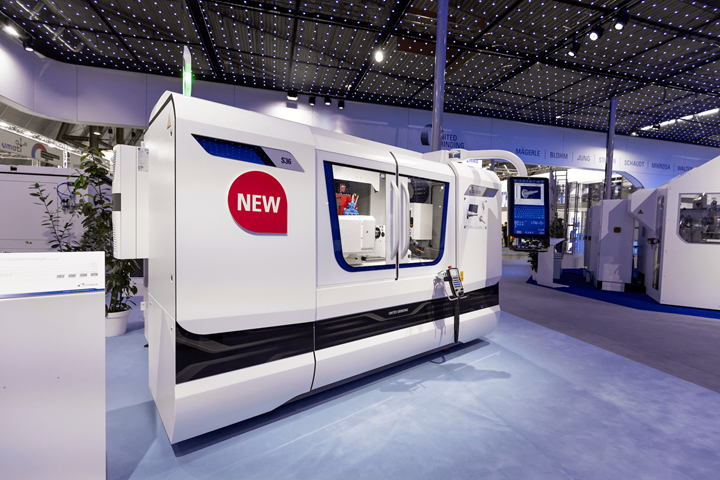Cylindrical Grinding System Extends Into Mold and Die Machining
United Grinding’s Studer brand unveils the S36 concept, featuring precise, reproducible cooling capabilities and a large grinding wheel for enhanced punch and die speeds.

The Studer S36. Photo Credit: United Grinding
United Grinding has developed the Studer S36 to meet the demand for suitable, productive grinding of external grinding of chuck and shaft components. This concept is capable of extending into mold and die and aerospace industries, but also the production of parts for the hydraulic and automotive industries. The S36 is positioned between the compact S11 for small workpieces and the S22 for medium-sized workpieces. New functionalities for changing requirements are said to supplement proven concepts.
The S36 has a fixed grinding head, with grinding wheel angles of 0º, 15º or 30º available. The distance between centers is 650 mm (25.6") and the maximum workpiece weight is 150 kg (330 lb). A Granitan machine bed and a workhead with high-precision roller bearings are foundational staples in the S36, United Grinding contends.
An important feature is the S36’s large grinding wheel, which has a diameter of 610 mm (24") and a maximum width of 125 mm (4.9"). “The S36 can speed up the production of round and non-round die can punches due to the wider grinding wheel this machine can accommodate,” Hans Ueltschi, VP of Cylinder Division at United Grinding, explains. “This results in a lower cost per part when compared to other Studer machines.”
In addition, the machine comes with the company’s C.O.R.E. operating system, which includes a touch panel and intuitive operation. Data exchange between machines or third-party systems is made possible via an integrated umati interface. This interface also provides access to the United Digital Solutions products directly at the machine and without the installation of additional hardware.
Machining control now manages efficient coolant supply through newly developed SmartJet nozzles, enabling precise adjustments to coolant volume flow to suit rough grinding, fine grinding or finishing processes.
Related Content
-
Developments in High-Speed Machining Technology
There have been many exciting developments in high-speed machining relative to machining centers and controls, tooling and CAD/CAM systems.
-
How to Eliminate Chatter
Here are techniques commonly used to combat chatter and guidelines to establish a foundation for optimizing the moldmaking process.
-
Solving Mold Alignment Problems with the Right Alignment Lock
Correct alignment lock selection can reduce maintenance costs and molding downtime, as well as increase part quality over the mold’s entire life.














